









By Mary Anne Gill
A raft of fresh faces could sit around the Waipā District Council table later this year with confirmation two long-standing elected members are getting out and others might follow.
Andrew Brown and Bruce Thomas have both said they are standing down while veterans Lou Brown and Roger Gordon are “seriously considering” their options.
Others like Clare St Pierre say they have yet to decide.
The first councillor to respond to The News’ request to sitting Waipā and Waikato district and Waikato
regional councillors was Kihikihi’s
Marcus Gower.
“I’m in,” was his response to whether he would stand for a sixth term in Waipa.
Deputy mayor Liz Stolwyk cryptically responded. “Yes, I’m standing for public office.”
Yet to respond are Philip Coles, Mike Montgomerie, Dale-Maree Morgan and Mike Pettit.
Susan O’Regan announced last week she was standing for a second term as mayor.
Andrew Brown will be a big loss. He chairs the powerful Finance and Corporate committee and has been a reasoned head around water issues. Early in the term he




was the ‘lone’ voice in favour of Three Waters reform saying he felt it would be more efficient and save money. Given the millions of dollars water reform is expected to cost ratepayers, Brown might well prove to have the last laugh.
Lou Brown, the oldest councillor at 79, said he enjoyed the Civil Defence portfolio, and it was this which had him in two minds.
Bruce Thomas said he had done 24 years and “enough was enough”.
Roger Gordon, 77, said it was still his wish to go on, but his children lived overseas, and he wanted to visit them regularly.
“I always said I would go on if I had the mental capacity to do so.”
Stolwyk lives in Ōhaupō – part of the Pirongia and Kakepuku ward - but has represented the Cambridge ward for four terms. Such is her popularity, she regularly tops the polling. She could stand anywhere and potentially for the regional council given her dairying, tourism and transport background.
On the community boards, Te Awamutu-Kihikihi chair Ange Holt apologised for being a ditherer. “I have not decided yet.”
Cambridge deputy chair Elise Badger is out while chair Jo Davies-Colley said she would
stand again but did not elaborate on whether that meant for the board or as sources suggest, the council itself.
Clyde Graf, one of two WaipāKing Council regional councillors, said he was not planning on standing again. “But there’s lots of water to pass under the bridge between now and then.” Stu Kneebone had not responded when this edition went to press.
Nominations for the local body elections open on July 1 and close a month later. Voting papers are delivered between September 9-22 and voting closes on October 11. • Let us know what you think editor@goodlocal.nz









This newspaper is subject to NZ Media Council procedures. A complaint must first be directed in writing, within one month of publication, to the editor’s email address.


The Waikato’s only sea scout group has received Royal New Zealand Navy recognition.
Kirikiriroa & St Peter’s Scout Group, which trains and sails Scout Standard Cutters and Sunbursts on lakes Karāpiro, Ngā Roto, Rotoroa, and Taupo, received naval recognition after meeting the highest standards of scouting and seamanship.
The navy recognition standards is only awarded to the top 15 scout groups in the country.
The group was formed in 2022 when Kirikiriroa Scout Group’s meeting place was demolished to make way for emergency housing, leading it to partner with St Peter’s
The Great Sequah
I’m the oldest Great Grandson of Charles Frederick Rowley, otherwise known as “The Great Sequah”. (editor’s note: the “quack doctor” mentioned in Cars, cows and miracle cures – A Snip in Time by Meghan Hawkes, The News, January 9)
Having researched “The Great Sequah” since 2007, and visited both North and South Islands on a couple of long holidays, I have gained a lot of information about his life in New Zealand and other places in the world.
Sea Scout Group.
“Naval recognition is an amazing achievement, especially as the majority of the group had little to no seamanship experience when the two groups partnered in 2022,” said Chris Gardner, a Group Leader of Kirikiriroa and St Peter’s Scout Group and a journalist working for The News.
Scouts and venturers won the Senior Scout Standard Cutter Trophy at the 2023 Scouts Aotearoa Northland Zone Regatta after crossing the finish line in a cutter borrowed from Shackleton Sea Scout Group in Whangārei. Both of Kirikiriroa & St Peter’s cutters had failed swamp tests after their buoyancy tanks had sprung a leak and taken on water.
Last year Kirikiriroa and St Peter’s with Putaruru Scout Group took home the Senior Seamanship Trophy from Kai Iwi Lakes.

read.
Thank you so much for what you have written about him, I’ve logged it in my files.
Peter Rowley Norwich, England
any plan for
of


If not satisfied with the response, the complaint may be referred to the Media Council P O Box 10-879, The Terrace, Wellington 6143. Or use the online complaint form at www. mediacouncil.org.nz
Please include copies of the article and all correspondence with the publication.
News/Editorial
Roy Pilott editor@goodlocal.nz
027 450 0115
Mary Anne Gill maryanne@goodlocal.nz
021 705 213
Viv Posselt viv@goodlocal.nz
027 233 7686
Chris Gardner chris@goodlocal.nz
027 231 7007
Advertising Director
Janine Davy janine@goodlocal.nz
027 287 0005
Owner/Publisher
David Mackenzie david@goodlocal.nz
Office/Missed Deliveries
07 827 0005 admin@goodlocal.nz
I have been asked to describe him by many people, the easiest way to describe him is to say he was an educated businessman, entrepreneur, showmanentertainer, charlatan, but, above all, a gentleman.
He was a gentleman in as much if he met someone who needed help, he would give them some money. While in Cambridge, England, in 1900, a lady asked him for help which he was not able to give, so he slipped a £5 note under her shoulder strap saying, “I think this will help you more that I can”.
In the later part of his life, he tried to lose himself on a farm near Balfour on South Island, and record wise I couldn’t find it, until while in Gore, I was introduced to a lady whose family lived on the farm. She took us out there the next day, and I was able to stand on the very spot he died, and looked out of the very window he looked out of as he died.
My research into where and what he was doing during the Second World War leads me to believe he was secretly working for the British government. He was a peoples person, and someone people would talk to about things they wouldn’t with other people, and I think several war traitors suffered because of that. Apart from what I have read referring to the Second World War his offspring seem to have followed in his footsteps, very dedicated to their country, with no war records that I am allowed to
Peter Nicholl’s excellent article, It’s about productivity, (The News, January 16) brought to my mind something I witnessed on January 10. I was sitting having a cup of tea outside the bakery opposite the dentist in Shakespeare Ave about 8.30am, as I waited for my car at the upholsterer’s.
Two late model Waipā District Council mini tip trucks were parked at the complex containing the dentists. The driver of one was casually blowing leaves towards the garden which they had presumably come from. The female driver of the other watched on, and twice went to her truck’s rear vision mirror to check her hair. A chap in a late model council ute was there briefly, left and came back for a short time before driving off again. Supervisor?
The leaves were blown back into the garden, and both trucks drove off. The cost of vehicles I saw ($100,000 plus?) non-productive staff wages, their annual and statutory holiday pay, ACC levies, Superfund contributions…all to shift back (not remove) some leaves. A pointless exercise paid for by the ratepayers.
I have lived in Waipa district (Whitehall) only two years, and I was astounded to realise that the council still employed “works” staff instead of opening this type of work (rubbish collection, mowing, gardening) up to competition from private contractors who would operate with a cheap ute and dispose of the material collected.
Local Bodies doing this uncontested work with expensive machinery will always be inefficient and wasteful, because they have no competition.
Has our new Chief Executive released
My wife and I regularly attend rowing regattas at Lake Karapiro and always have paid a spectator fee on entry. We note (Cambridge News, January 16) free entry was provided to all spectators attending the Waka Ama National Sprint Championships over the six day duration.
Can we expect the same generosity for those spectators attending this year’s Maadi Cup from March 22 to 30?
A.J. Rillstone
Cambridge
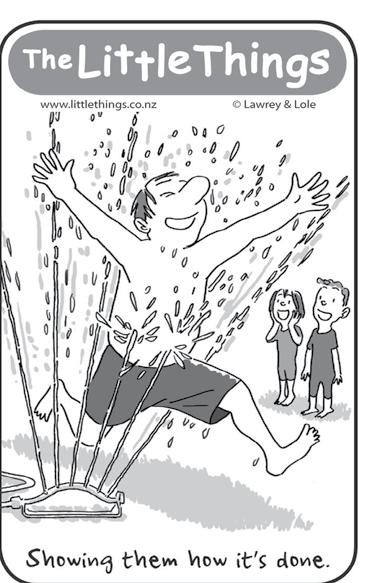





ON 1ST FEB







Festival One, New Zealand’s premiere Christian music and arts festival, starts at Hartford Farm, Karāpiro, tomorrow and runs until Monday. More than 100 performers will take to five stages over the weekend.
The builders of Te Awamutu Presbyterian Community Centre on Mutu Street are expected to hand the keys over to the church in about five weeks.
The Conservation Department says it will review the pricing of Pāhautea Hut in Pirongia Forest Park next financial year. Adult trampers pay $10-15 a night to stay in the 20-bunk hut near the summit of Mt Pirongia. Hut prices are reviewed every three years.
Paralympian Peter Cowan was presented his numbered pin by Paralympics New Zealand at the Waka Ama National Sprint Championships held last week at Lake Karapiro, Cambridge. Cowan, 29, from Hastings, competes in an adaptive version of waka ama and picked up a bronze in Paris last year.
The Waipā Networks Business Awards will celebrate a century of service to the community by taking on a 1920s theme at this year’s gala dinner. Entries for the awards, which have 17 categories, are open to March 10.
Candidates are being sought for the Tuia programme which aims to develop the leadership capacity of young Māori. Successful applicants undertake 100 hours of community service and receive mentoring – in the case of Waipā, from the district’s mayor. Last year mayor Susan O’Regan worked with Taane Aruka Te Aho.
The post-Christmas strain is showing in Waipā and the King Country. Chris Gardner checks on the region’s foodbanks and find a consistent story – the demand for help continues to grow.
Te Awamutu Combined
Churches Foodbank needs more food, more space to store it, and more volunteers to pack it, as post-Christmas demand busts records.
Foodbank co-ordinator Rita Middleton has a growth story that nobody wants to hear.
“Our demand is huge, with an increased in needs over two years,” she said. Demand in that time has almost doubled.
Volunteers handed out 784 parcels last year, compared to 500 in 2023, and 400 in 2022.
“In the first week back after the Christmas break, we handed out 23 parcels,” Middleton said. “It really is a matter of people coming to us and saying, ‘we have no food to feed our children’.”
If demand continued at that rate throughout the year the bank would need to provide nearly 4000 food parcels.
“It’s poverty, or poor management of finances, but who am I to judge?,” Middleton said.
Food is donated by churches, individuals, supermarkets, and the Kaivolution scheme, as well as funded through cash donations.
“We spend around $500 a week on groceries,” she said.
While the shelves are far from empty, Middleton said there was a strong need for the staples as well as supplies for new mothers such as baby wipes and nappies as well as feminine products.
The foodbank does not need any more cat food.
“We have two or three large boxes of it,” she said.
As demand increases Middleton said, so does the need for storage and the organisation is quickly running out of space. She
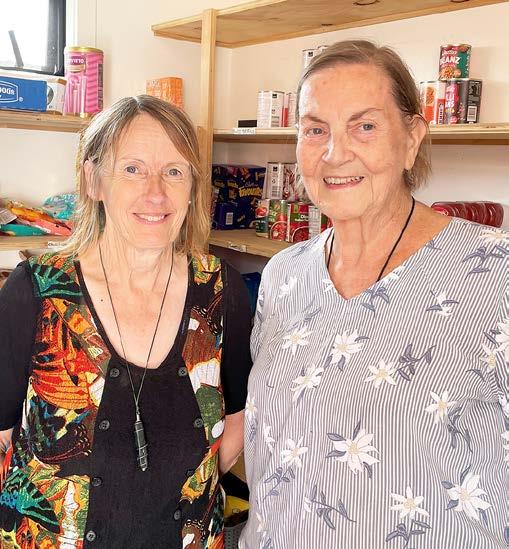
also needs people to help prepare food parcels and deliver them in some cases.
“We need more volunteers,” Middleton said.
The Kainga Aroha Community House financial mentor said she had seen 120 clients since July, three quarters of them being new.
“I have given out 42 food parcels since July, the previous year it was 37.”
“So many people have got mortgages and are concerned about mortgage repayments,” she said.
Her biggest worry was single mothers who were struggling to pay the rent.
“They can be charged

We
Rosetown
$460-600 a week.”
“I try and say save 10 per cent of your income a week and pay yourself first.”
The demand for food parcels from the Cambridge Corps of the Salvation Army food bank could reach record levels, as the post-Christmas credit crunch catches up with the community.
“Demand for food parcels is definitely increasing,’ said Salvation Army community engagement team leader Julieanna Seath.
“There was a stage last year’s where we were giving away in excess of 100 parcels per month,” she said.
“We are currently sitting at about 80 per month but with the Government making cuts, Christmas expenses, back to school costs, I would not be surprised to see it increase to more than 100.”
The food bank supplied up to 130 parcels a month in 2023.
Seath said it was not just beneficiaries and the homeless looking for help, but people from dual income families who found finances stretched through no fault of their own.
The Salvation Army operates a model where food bank users given credits to spend in the store
so that they can pick what they need rather than being given a pre-packed box of groceries.
The Salvation Army also regularly helps people with clothes and furniture, as well as well as the growing homeless with a shower, Seath said.
“We always have needs, and we always happily take donations. Our community has been absolutely amazing,” Seath said.
“We have some really big donors, including one who comes in with $2000 worth of groceries for us a couple of times per year. Some farmers kill an extra beast, have it cut up and put in our freezer, and clubs, organisations and schools donate.”
Around $1000 a week is spent on supplementing the foodbank to ensure it has enough stock.
Te Kuiti Food Bank delivers weekly food parcels to the town’s schools from Journey Church.
“We deliver five parcels a week that the principals can pass on to the families who really need it,” said Journey Church senior pastor Terry Bradley. “Some of the people who really need it tend not to come and get help.”
Bradley said the initiative became consistent about six months ago.
A further 15 parcels a week are handed out by the foodbank on the two days it is open, bringing the total up to about 20 parcels a week.
“We handed out eight parcels today,” Bradley said of the Sheridan Street operation on Monday.
The foodbank is mostly funded by the Ministry of Social Development, with some community donations, including $30,000 worth of parcels distributed just before Christmas.


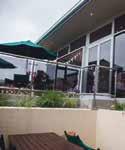
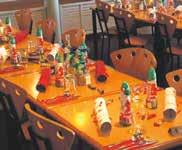
Club Facilities and Member Benefits
• Plenty of off street parking
• Rafters Restaurant
• Full TAB Service
• Gaming Lounge
• Pool and Snooker Tables
• Dartboards
• Kids Zone with gaming consoles and foosball table
• Live Entertainment
• Courtesy Van

Great people, great food, great atmosphere. Enjoy what the club has to offer! Club Opening Hours Monday 1pm – 8pm

• Members Draw Nights
• Meat Raffles
• Covered outdoor dining area
• Venue Hire at discounted rates
• Range of Social and sports groups available
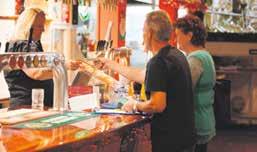

1pm – 10pm
1pm – 8pm

Incoming Te Wānanga o Aotearoa chief executive Evie O’Brien will be welcomed back to the Te Awamutu headquarters next Tuesday with a pōwhiri.
It is 10 years since O’Brien left the organisation and she has spent the last four years as executive director Atlantic Institute in Oxford, England, focussing on addressing systematic causes of inequity.
So, what will be her first task, after the pōwhiri?
“It’s been a long time,” O’Brien told The News on a virtual call. “The first thing is to look and listen. To meet with staff, to review all of the documentation.”
Much has changed in the 10 years since O’Brien last worked for the Te Wananga, most notably governments, but she said “incredible leadership” had put the organisation on the front foot as the government demanded tertiary institutions to do more with less.
She referred to Te Wananga founders Rongo Wetere and Iwi (Boy) Kohuru Mangu who started the organisation in Te Awamutu in 1983.

“Te Awamutu is where the founders of the organisation mortgaged their homes and started this organisation in Te Awamutu College,” she said with pride.
That was chapter one.
Te Wānanga o Aotearoa has grown to now provide tertiary education to more 36,000 students at 80 campuses across the country.
“Without wanting to sound corny, I have the opportunity alongside many others to maybe contribute to Chapter 15 of a 60-chapter book, which has lots of authors,” said O’Brien, whose
whakapapa is Ngāti Awa, Ngāti Pikiao, Ngāti Ranginui and Ngāti Maniapoto.
“That puts it into perspective.”
Māori once had the lowest participation rate in higher education among indigenous people in the world, but O’Brien was happy to say the dial had long since moved on that to one of the highest participation rates. But the country still needed to
plug the gap for those for whom mainstream education was not working.
O’Brien, who will move to Te Awamutu as she takes up the role, talked about developing Te Wānanga o Aotearoa by building on relationships it already has with business and community organisations, while looking at opportunities to build new relationships for the betterment of
the community.
“We’ll partner with a community organisation or a tribal authority in innovative way, taking education to the people. It’s scary, and exciting at the same time,” she said. “We look at what works, particularly for people who are working, and I think there is an opportunity to scale this.”
O’Brien envisaged a learning pathway that developed and grew that saw Te Wānanga o Aotearoa students, at whatever stage of life, progressing through different courses or programmes that meet a need.
She brings to mind courses for those working in healthcare or law enforcement.
“My role at Oxford was just incredible,” O’Brien said. “I worked with some extraordinary people across the world. Many of my fellows were on the front line, whether it was war or displacement. It gave me an appreciation of things that we often take for granted. When someone says, ‘you can’t do that’ we say, ‘watch’.”
O’Brien will work alongside current kaiwhakatere chief executive Nepia Winiata to ensure a smooth transition before his farewell on February 13. He has served the organisation for 15 years.





























By Mary Anne Gill
Hay on the sideline, sun beating down, plenty of places to pitch a marquee and lay down picnic blankets
and chairs, food and coffee truck and an international women’s polo test. What more could you want in Leamington on a late Friday afternoon?

New Zealand lost to Zambia 4-3 having fought back from 3-0 down after a nervous start at Cambridge Polo Club’s grounds on Lamb Street.
All eyes were on timekeeper award-winning farmer Estee Browne as the time ran down in the last chukka.
Because of a gremlin in the loudspeaker there was no commentary, which for those in the crowd unused to the rules of polo, was a slight hitch given how entertaining and informative it had been.
Two of Zambia’s goals came from Kayleigh Clayton, 18, making her debut while Nunu Henderson, 24, and Mary Jellis, 18 got the others.
Waikato Diocesan School for Girls’ boarder Niamh Ainsley, 17, scored two of the Kiwis’ goals while captain - renowned Rangitikei rural artist Harriet McKelvie –slotted the other.
Grooms were kept busy preparing horses for action and hosing down the ones who had competed. Given action on the field was fast and furious, horses were changed regularly with Zambia using ones provided by the Clevedon-based Duncan family.

Georgie Duncan, 23, who has played in England, Argentina, Africa, Australia and soon Zambia was in the New Zealand team for the test watched by her proud father Ken Duncan holding veteran Ricky Baker, a former Australian stock horse now a regular in polo matches around the north. He was a spare for the test and to his annoyance did not make the field.
Zambia’s captain Emily Paterson, 21, currently
studying in the UK, won the most valuable player award while the champion pony was Alice Dunmoor’s Kanye. “He’s for sale,” she excitedly told the crowd.
Best playing thoroughbred was John-Paul Clarkin’s Bramble from the Mystery Creek Polo Club off Kaipaki Road.
The Zambian team received the prestigious Women’s Internationals rosebowl, presented by Duke St star of famer, Cambridge’s

Jim Watson and wife Ann and traditionally presented to the winning team in the Waikato.
The match and prizegiving wrapped up in just under two hours only to pick up again with club action the following day. The two teams play again next week in Hawke’s Bay and the New Zealand men play England at Mystery Creek on January 31. The event is the highlight of Polo Week at the club.

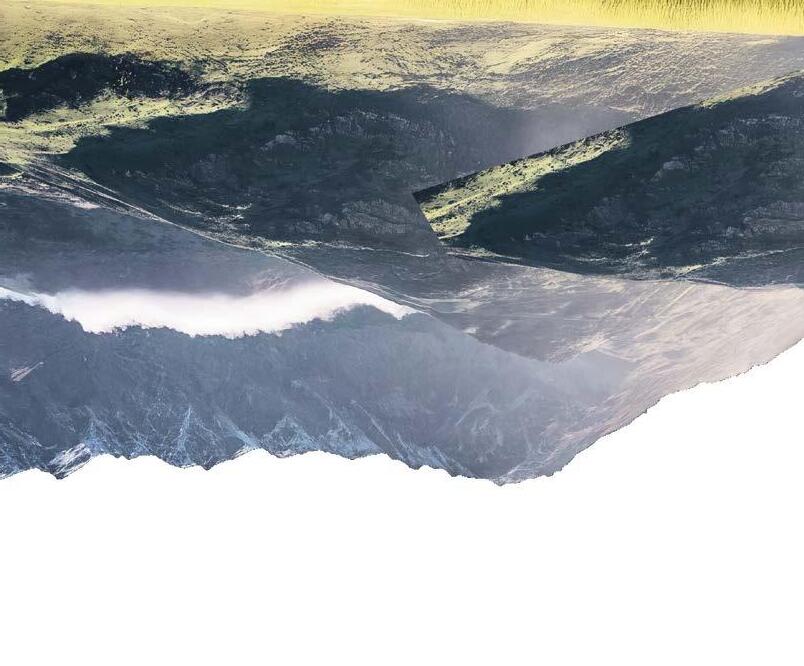

By Chris Gardner
Orienteering Waikato members have found a way to support Sanctuary Mountain Maungatautari with a Save the Sanctuary Rogaine.
When the club heard the Department of Conservation had withdrawn operational funding from the Maungatautari Ecological Island Trust, which operates the world’s largest predator proof fence, they decided to do something about it. They have organised a fundraiser on March 2 as part of the club’s Rugged Rogaine series.
The trust, which is guardian of 3363 hectares of native bush at Pukeatua, reported a $500,000 loss in the last financial year. Waikato Regional Council and Waipā District Council continue to part fund operations of the $5000 a day attraction, while the Department of Conservation has switched to targeted funding.
“Rogaining is an endurance sport combining tramping, navigation, competition and strategy,” said club spokesperson
Emma Guest.
“Teams of two to five people are given a map and must plan a route with the aim of visiting as many checkpoints as possible in a set time period.”
There are two-hour, four-hour and eighthour courses planned for the event, following the mountain’s predator lines.
“The checkpoints will be marked by orange flags with electronic timing devices.”
The club, which celebrates its 50th anniversary this year, has spent months upkeeping the monitoring lines in preparation for the event.
“The sanctuary requires support from the community to continue their important work.” Guest said.
“They need our help to keep the fence secure, to continue with their world-leading Kiwi conservation programme, and to monitor critically endangered kākāpō on the maunga. Sanctuary Mountain is a community led initiative and it’s going to need the community to keep it going.”
The club hopes to get 300 registrations between now
New regulations are in place to ensure power lines are kept clear of trees and people stay safe.
They identify four key zones for property owners to be aware of. Check out our website to find out more about the zones.
If you have trees that you ’ re concerned about, contact Waikato Tree Services. waipanetworks.co.nz/safety/ rules-and-regulations/

and February 27 and raise $10,000.
Sanctuary Mountain chief executive Helen Hughes and her team are looking forward to welcoming Orienteering Waikato for its Rugged

“The support of Orienteering Waikato and the event’s aim of raising funds for the vital conservation work of the sanctuary is immensely appreciated,” she said.
The trust is focussing on earning revenue through five funding pillars: tourism, education, science and research, donations, and biodiversity credits.
Last year the biggest movement of North Island brown kiwi took place, as Sanctuary Mountain staff sent 222 kiwi to other conservation projects around the North Island.
This year, the team hopes to offer kiwi encounter experiences.

By Janine Krippner
There is a lot of misunderstanding around what leads to eruptions, and that is absolutely reasonable considering that it’s a highly complex field requiring different experts who understand the physics, chemistry, and geology.
Volcanic systems are incredibly complicated and there is a lot we don’t yet understand.
First off, most of a magmatic system is well below the surface of the Earth and we cannot see it. We can use geophysics – the study of the physics and physical properties of the Earth, to estimate aspects of it, like how deep it is. The chemistry of magmatic gases that we can collect at the surface can assist with this, and computer models or simulations also help.
We can look at very old rocks that moved to the surface over many millennia to understand these systems, such as granite, which is magma that never erupted and cooled within the crust. We also look at the rocks that erupt at volcanoes and the crystals they contain.
The basic way of simplifying all of this in textbooks is a diagram showing a roundish blob of magma below the surface, leading to the idea that a big hole fills up with magma and once it is pressurised it erupts. This is wrong.
In reality, magma is often stored in multiple pockets or reservoirs at different depths, linked by pathways. None of these are an open gap or hole in the crust (roughly the upper five to 70 km depending on where you are) or the mantle below that, because despite what movies like The Core (2003) will depict, we are talking about enormous pressures down there.
Deeper down, magma moves upwards into these pockets because magma is less dense than the surrounding rock. Think of pouring oil into water – the oil will rise to the surface
because it has a lower density.

Magma within these reservoirs (also known as magma chambers), is evolving through time as crystals form within the melt (molten rock), gases are released, and surrounding rock may be melted or chunks are broken off and incorporated into the mix.
The amount of molten stuff within that mix of solid and liquid rock is what we call “eruptible magma”.
This is the stuff that is actually capable of eruption, instead of being solid enough that it can’t really go anywhere. When a large amount of crystals, called a crystal mush, have formed, the magma probably isn’t moving upwards unless something happens, like enough hotter, fluid magma enters from below. The solid crystals and chunks can sort of lock it all into place.
Eruptible magma typically contains less than half of the solid stuff. Even then, it might not erupt. Researchers are still working to understand these processes and our understanding keeps improving. There are more exciting discoveries to be made, and advances in technology give new opportunities to understand our planet in new ways.
The next time you see someone talking about magma chambers below a volcano, remember that it is far more complicated than is usually let on.
There may be magma left over from a past eruption, there may be multiple pockets cooling and evolving, it may just need some fresh, hot magma injected into it to get it moving.

By Norris Hall
No doubt many of you, like me, have seen the harrowing images on the television news, or on various social media platforms, of widepread wildfires which have devastated areas of California, north of Los Angeles.
The infernos of destruction have not discriminated in the destroying of homes and businesses in a matter of hours; residences and buildings into which so much has been invested with hope and dreams. Over two dozen deaths have been recorded thus far in what can be described as hell on earth. And to make matters even worse there have been reports of opportunistic looting of evacuated homes, as well as minor earthquakes and slips.
It has been a living nightmare for law enforcement agencies and emergency services. The insurance bill will be astronomical and payouts will not compensate for the loss of treasures, both personal and cultural. A rebuild will take time, a sense of loss healed.
Many of those interviewed as they surveyed the scope of their loss have been surprisingly stoic, masking an internal build-up and conflict of emotion and turmoil.
But California is not alone in experiencing such hellish destruction. Australia experiences an annual scourge of bushfires, destroying everything in their path. And neighbouring New Zealand, our God’s Own, has suffered earthquakes in Christchurch of recent times; our country is not called the “Shakey Isles” for nothing. And being situated in the South Pacific, it is no stranger to cyclones, one of which was a very destructive Bola in early 1988.
But despite that sense of loss, the overwhelming damage, the light of human resilience always shines through that darkness and despair. We will rebuild and live life again. History tells us that destruction is part of the process of regeneration and change.

In 70AD, the Roman occupying force in what is now Israel destroyed the Temple in Jerusalem as part of putting down yet another major rebellion. The Jewish people were forced into exile and were scattered throughout the then known world. They suffered persecution and discrimination and pogroms.
And yet their hope, faith and intention to return to Jerusalem and their home-land remained strong.
While the Temple has yet to be rebuilt today, Jewish people have been returning to Israel since the British Mandate – if not earlier; transforming desert into productive areas, creating effective infrastructure and new lives.
Out of the rubble of destruction and conflict has grown a new, promising future.
To bring these thoughts closer to home, even to ourselves, we have been confronted by the deaths of loved ones, job loss, burglary and accidents, diagnoses of life threatening illnesses and so on. In all those instances we may be experiencing our own personal wildfires, earthquakes or cyclones. And we may wonder “Where is the justice in all this? Why is this happening to me? What have I done to deserve this? How will I cope?” We are beset with a flood of emotions and conflicting thoughts.
The human spirit will always prevail over whatever is thrown at it. We will always survive and rebuild, no matter how long and painful it may be. The Californian wildfires remind us how vulnerable we are and how fragile the environment is at any given time, and how prepared and resilient we must be. It’s something to think about in the days and months ahead.








By Peter Carr
One of the true delights of the period from mid-December until the middle of the following month is to undertake a momentary flight from the mundane of the majority of the year and undertake something different. Preferably not at home.
In my case it is to pack a couple of books and retreat under a shady tree and devour the words - even with time to go back over already consumed paragraphs to understand the greater - or underlying - thrust of the prose.
This most recent holiday saw me throw a couple of autobiographies into the trunk of the car and sit on the post-dawn terrace each morning, sipping tea and immersing myself - while the just-released chooks were pecking around my feet.
The books were two very different stories from two very different continents. Both recorded a rise to greatness, but from very different pathways.
Michelle Obama, brought up on the very dark side of Chicago (no pun) into a level of poverty-wrapped shared apartments, produced a revelation that, from small beginnings and a destitute base, greatness can be achieved. In part - her part - through sheer hard work, dedicated school studies and acceptance into two Ivy-league universities where darker skin was almost an extreme alternative to money-fuelled paler tones.
Having the good fortune to meet with, and marry, a dedicated fellow lawyer - driven to helping those in lower socio-economic areas to dream the American dream - produced a duo who embraced the scary side of the White House with simplicity and sincerity.
Guarding her daughters from the gaze of the gun-toting security officer who actually sat in
on the class studies was a challenge that many would have failed. Creating a vegetable garden on the pristine lawns of America’s leading garden would have raised many eyebrows but strength and perseverance brought with it a group of other well-heeled ladies who wanted to share the fork and spade.







On the other side of the world actor Sam Neill brought me through his fledgling years trying to break into acting without the support of years spent at any drama school. That he succeeded is well known as he came from a family where a commission into the British (or even Irish) army would have been perceived as more historically appropriate. That he fell in love with wine and, more appropriately, immersed himself in growing vines and producing superb pinot noir, was just part of the whole that puts this unusual man together. Sir Nigel (yes that is his formal name) must grate as he eschews use of his formal christening nomenclature - in preference to just being plain Sam. A self-imposed address that suits his humble purpose.
Like many Kiwis who tread the footlights he finds fame - and no doubt improved fortuneon the other side of the Tasman but his Otago roots and Christ College education pull him back to Godsown frequently.
Sadly, he is battling - and openly discussing - the onset of cancer, and he tackles it head-on in the latter chapters. His written humour is frank, and I share with him a lack of sympathy for fools who direct, through autocratic or bureaucratic actions, to channel the life course of those who can provide their own satisfaction.

















By Chris Gardner
Operational Solutions for Primary Industries (Ospri) is being asked to explain a $16.6 million write-off related to the failure of a major software project.
Ospri’s Informations Systems Strategic Programme was meant to add functionality to the MyOspri portal, integrating new National Animal Identification and Tracing (NAIT) functionality.
Federated Farmers Waikato vice president Andrew Reymer made the request for a meeting with the board and a quarterly report after a remit requesting Federated Farmers be given a seat for a farmer
who “understands the principle of good governance” on the Ospri board failed.
Federated Farmers is not a shareholder of the organisation and does not qualify for a seat.
“We do not have the power to demand that,” Reymer told The News following a discussion at the Federated Farmers National Council of Provisional Presidents.
Ospri, a partnership between primary industries and the government, manages the National Animal Identification and Tracing (Nait) and TBfree New Zealand national programmes.
Reymer’s remit said Ospri’s inability to integrate Nait with third party software
providers put the primary industry at greater risk, duplicated the regulatory load for farmers and resulted in a poor fiscal outcome for levy payers.
NAIT is only currently available to support beef, dairy and deer livestock with no ability to track sheep or pigs, both industries that would benefit from traceability in a major disease outbreak, the remit said.
“The ownership structure of Ospri being partially owned by the levy bodies was supposed to be able to provide farmer ownership. The levy bodies as it stands have very little engagement with grass roots farmers, unlike Federated Farmers. The proposal to dissolve the Ospri stakeholder
A pest plant like “a little Dracula” and found only in Waikato wetlands is being vanquished in shallow graves near Kopuatai Peat Dome.
Seven infestations of the parasitic golden dodder (Cuscuta campestris) were found last March by Department of Conservation staff who were checking a trapline on public conservation land managed by Waikato Regional Council as part of the Waihou-Piako flood scheme.
An eighth infestation was later found.
Golden dodder is an annual pest plant that depends on plant hosts. It was the first time it had been found at Kopuatai, although known sites at Lake Whangape, lakes Rotongaro and Rotongaroiti and Whangamarino Wetland are being actively managed by DOC, and neighbouring properties by the regional council.
Waikato Regional Council Senior Biosecurity Officer Kerry Bodmin says it was decided by both organisations that best way to manage the Cuscuta at the Kopuatai site was to spray it, dig it out and bury it onsite, to hopefully prevent future infestations.
Digging out the top 10 centimetres of soil would remove any seeds in the vicinity and burying the dug-up material at least 50 centimetres in the ground would prevent any seeds surviving germination.
“This method is not feasible at Whangape and Whangamarino because of the size of the Cuscuta areas and the wetland environments mean we’d be more likely to lose a digger than anything else.
“At those sites, we do aerial and ground control, but we’re also trialling planting margins with native monocots that are
not host species, like flaxes and sedges, with the idea that those plants will grow big enough to outcompete the seed and hosts living there.”
Golden dodder, which is toxic to stock, was found in New Zealand in 1941 and probably arrived as a contaminant of imported crop seeds.
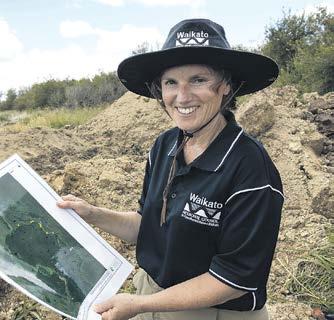

council which appoints the Board of Ospri, means there will be even less farmer oversight over who is appointed to oversee the key Ospri projects, like the Nait software rebuild.
These projects have the potential to lose sight of what the end user needs, and how critical third-party software integration is to this, especially in the event of a major disease outbreak. The current board is made up of professional directors which lack ‘skin in the game’.”
“We want to try and get a bit more of a handle on what’s going on,” Reymer told The News.
Ospri has been contacted for comment.

Golden dodder, Cuscuta campestris, has ‘teeth” which bit into other plants.
“It’s actually a pretty groovy plant with so many features,” says Bodmin.
“When its seeds germinate, they have to find a host within seven centimetres, or their reserves will run out. Each seedling sends out tendrils that go up and twirl around, anticlockwise, looking for something to wrap around. When it finds a host, it attaches to it with these teeth – I call them teeth but haustoria is the botanical name – and they penetrate the plant so it can suck out all the water and nutrients.
“That’s how it feeds – so it’s like a little Dracula. And that is the only way it can get its nutrients.”
The plant is a threat to native ecosystems in wetlands, including bittern habitat, and a threat to the agricultural sector because it can be responsible for reducing crop yields by 50-75 per cent.



Stay hands-on: why checking your grazed livestock matters
When your livestock are grazing offsite, your legal responsibilities under the Animal Welfare Act remain firmly with you. Their care doesn’t take a holiday, and neither should your involvement. Here’s why regular check-ins are essential:
• Monitor growth and health – Insist on regular weigh-ins and detailed reports from the grazier. Numbers tell part of the story, but being present at some sessions allows you to verify accuracy and see your animals’ condition firsthand. Early detection of issues, like lameness, can prevent long-term problems and ensure timely treatment.
• Hold graziers accountable – A “set and forget” approach risks your animals’ welfare. Make unannounced visits to confirm they’re receiving the feed, water, and care described in reports. This keeps the grazier accountable and ensures your livestock are thriving.
• Support young stock development –Young stock are at a critical stage of growth. Regular checks help ensure they are meeting weight targets, receiving adequate nutrition, and developing well for a productive future.
Being a hands-on owner not only protects your animals’ well-being but also ensures you meet your legal obligations. Your animals depend on you to advocate for their welfare— wherever they are. Need advice? We suggest you speak with your solicitor or contact the team at Edmonds Judd – we are here to help!

Fiona Jack
By Chris Gardner
The Stubbs family of Awatiro Farm are preparing for the return of kiwi.
“There’s talk of creating a Kiwi sanctuary nearby,” said sheep and beef farmer Ben Stubbs.
He’s from the fourth generation of the family to farm Awatiro off Te Anga Road near Waitomo village, and the family has found kiwi bones in its cave system over the years.
“The sanctuary will bring their genetics back to our place.”
Rick and Moira Haddrell, who own neighbouring land, are exploring reducing predators to the extent that they can establish a home for some kiwi from Maungatautari Sanctuary Mountain in the Waipā District. The Haddrells hope to have their land ready next year, with the support of neighbours.
“There’s a huge part to play for this area to make this a success,” Ben Stubbs said. “It will really drive some changes on the farm. It’s a must for the King Country.”
He grew up on the farm before leaving home to train in fine arts and teaching and securing a teaching job at a Morrinsville school.
He returned to farming at Awatiro, a name chosen by his great grandfather Hugh, 21 years ago after his father Alister, mother Ann and uncle Antony, sought help running the farm and continuing the Stubbs legacy.
Ben and his wife Bex, a fine arts teacher at Te Kūiti High School, are about to vest an extra 20 to 30 hectares into its Queen Elizabeth II National Trust covenant.
In so doing they hope to help return more land to its natural state and protect more native flora and fauna species on the 663ha farm.
“About half is QEII land,” Ben said. “We began divesting it in the 1980s. Ever since we have been adding a little bit here and there. It helps improve the quality of the ecosystem. More and


more we are looking for opportunities.”
They have a native tree planting programme, mainly grown from seed collected on the farm.
“This is grown on by volunteers in Hamilton and then planted using volunteers when we can. The areas now encompass over half the farm including four headwaters.”
The Stubbs do it for love, and to protect the environment surrounding the farm for future generations.
“We have seen a huge amount of regrowth in the trees and controlled possums to some degree.”
The Stubbs have set possum traps all over the farm.
Alister, 84, enjoys a daily drive across the farm to check them, capturing about 130 between mid-November and our visit in mid-January. They also get a little, much welcome, rate relief on the vested land.
“I don’t believe there’s enough rate relief,” Ben said. “I think there could be a bit more in it for farmers.”
The Stubbs are also involved in a community driven Waitomo water catchment group, whose members have been focussed on improving water quality in the district for 30 years.
“The whole community is behind that, and it’s a really good model,” Ben said.
“Recently we have identified areas which will qualify for carbon credits. These areas while not huge will give an ongoing passive income until 2050.”
Awatiro is a sheep and beef farm.
The Stubbs stopped cropping on the land about 15 years ago.
“We lost a lot of topsoil in the rain,” Ben said. The rain came shortly after planting, so there was no root system to speak off to retain it.
The Stubbs run 1100 Romney Texel cross ewes, and their lambs, on the farm, producing thousands of kilograms of wool each season.
“Prices are a lot more stable than last year, prices are reasonable, not terrible,” he said. “But we are still shearing our own sheep because we can’t afford to get people into do it.”
The flock is sheared twice a year. Ben’s son Elijah, 20, takes leave from his trapping job to help his parents out.
His sister, Te Kūiti High School pupil Edan, 16, is on hand with a broom to sweep the wool into a large pile.
“Wool is a fabulous product.

However wool prices while improving have a long way to go before we see a return. Sheep on the sort of country we farm will always have a place. Getting the mix right between sheep/beef/trees and tourism is the challenge.”
The Stubbs also run 60 breeding cows built from a dairy beef cross using a Hereford bull over all.
“The last few seasons have been very challenging with high interest rates, increasing costs and lower returns,” Ben said.
“I am hopeful that the beef market will continue to perform well and that lamb prices will hold on better than we have seen recently.” Elijah and Edan are the firth generation of Stubbs to be raised on the farm, and one day Elijah is planning to take over form his parents.
“I will take over, and do what is ever needed to be done,” Elijah said.
Other family members make a living off the farm.
Ben’s brother, Angus, runs Tetiro Bed and Breakfast with his wife Rach, and his sister Biddy and her partner Rich Kersel run Rock Retreat Bed and Breakfast.
“Many farms have retired significant areas of land to improve water quality, planting trees and restoring existing native forest,” Ben said.
“As these areas heal over time there will be further challenges to control pest species. For farmers in the Waitomo catchment, we are mindful of the fact that the water that flows from our land passes through the Waitomo Glowworm Caves.
A thriving tourist destination. “Farms are multidimensional spaces. A decision in one area may affect another.
“One benefit of being on a fifth-generation farm is hindsight. Our challenge as a family continues to be working to achieve a balance on both sides of the fence.”
By Clyde Graf, Waipā-King Country Councillor
During its last meeting, Waikato Regional Council was required to consider a political statement for submission to the Treaty Principles Bill Justice Select Committee. However, councillors only received the submission on the afternoon prior to the council meeting (instead of the usual five working days). The public were also shortchanged by this manoeuvre - the document was not made available for public scrutiny until the day of the meeting.
The submission, moved by Stu Kneebone and seconded by Noel Smith, was written by council’s iwi relationships team, not councillors. Warren Maher, chair of the Policy and Strategy Committee, declared his frustration at the poor procedural process, and the short notice councillors were given to consider the document. As a result, councillors Maher, Cookson, Dunbar-Smith, Hughes and I voted against the submission, and councillor Downard abstained.
The submission’s introduction says “thank you for the opportunity to submit on the Principles of the Treaty of Waitangi Bill. Waikato Regional Council (WRC) opposes this bill and advocates for its abandonment.
The bill seeks to eliminate the principle of partnership with iwi and hapū, undermining the foundations of co-governance, comanagement and collaboration. This submission reflects our council’s commitment to upholding the Treaty of Waitangi and fostering robust co-governance and comanagement partnerships with iwi and hapū.”
In my opinion, this was a staff submission, not a council submission. A political statement supported by eight of 14 councillors (including both Māori ward members) – is certainly not consensus. Yet the document was submitted


as if all of council agreed to it. My request to have the vote outcome included within the submission, for clarity, was rejected, and therefore the inferred support for the document was misleading and deceptive.
The eight councillors who supported this ratepayer-funded submission – Kneebone, Smith, Clarkson, Storey, Strange, Nickel, Mahuta and Hodge - have effectively used council as a political soap box to progress personal points of view. Support or oppose the Act Party’s bill, this was never the business of council as a whole.
As councillors, we’re instructed not to submit on political issues, to be seen as keeping an open mind. Once our position has been publicly declared, we’re told, predetermination excludes us from voting on those issues.
Already this term, Chris Hughes has been excluded from voting on Long Term Plan decisions because of personal submissions made earlier in the year.
Are those councillors who spoke to and supported this submission now excluded from voting on similar issues?
Presenting late agenda items and addendums appears to be a tactic used when council is required to consider controversial issues.
Section 46 of the Local Government Official Information and Meetings Act 1987 states that agenda items must be publicly available at least two working days before the date of the announced meeting, preferably more. This is not the first time controversial issues have appeared late on the council agenda. Let’s hope it’s the last. That is my personal view.





contractor specializing in rural fencing (conventional, electric, post and rail) and residential paling fences.
Fencing contractor specializing in rural fencing (conventional, electric, post and rail) and residential paling fences.
7352 E martinleveridgefencing@gmail.com
P 027 737 7352 E martinleveridgefencing@gmail.com


A trade agreement with the United Arab Emirates is seen as offering significant opportunities for the red meat sector.
Prime Minister Christopher Luxon and Minister for Trade Todd McClay signed the UAE Comprehensive Economic Partnership Agreement in Abu Dhabi last week.
The Emirates eliminate tariffs on frozen beef and sheep meat from New Zealand.
Meat Industry Association chief executive Sirma Karapeeva there was increasing demand in the market for the high-quality, safe, sustainable, and nutritious products that New Zealand could provide.
“With a population where over 75 per cent are Muslim, the UAE is a key halal market that is increasingly looking for reliable sources of high-quality red meat that meets their strict halal expectations.
“Halal-certified exports made up 37 percent of total red meat exports in 202324 – New Zealand is well placed to meet the UAE’s red meat needs.”
Beef and Lamb New Zealand chief executive Alan Thomson said the entry into force of the Comprehensive

Economic Partnership Agreement comes at a crucial time for sheep and beef farmers following a challenging two years onfarm and headwinds in global markets.
“New Zealand farmers are raising sheep and cattle to provide the UAE market

with the high-quality protein they are seeking,” he said.
“Improving market access settings for New Zealand’s beef and sheep meat is critical to the wellbeing of our sector, with approximately 60 per cent of export revenues flowing through to farmers.
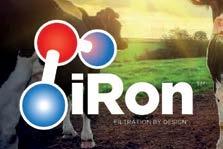














Across 1. Film house (6)
4. Diminished (6)
9. Quick (5)
10. Usually (2,1,4)
24. Person who enjoys books (6)
Last week
Across: 1. Blab, 4. Fasten, 8. Stapler, 9. Apart, 10. Rile, 11. Bullseye, 13. Therefore, 17. Observer, 19. Aqua, 21. Shape, 22. Latrine, 23. Tender, 24. Week.
Down: 2. Leaflet, 3. Bald, 4. Fortune-teller, 5. Stallion, 6. Erase, 7. Steer, 8. Sure, 12. Befriend, 14. Enquire, 15. Bossy, 16. Cane, 18. Stage, 20. Stew.
RCLYWUSYUPULSAECIN RELHBUEOROIEINXIRA EJUINFECTAINACYTIH GNSGONTTINNNFRZESH UIINGXICEEIIOENZCT LPOIHEJRISYVGIRNYE
ANNCUCTOWLIBLAINFL RTSBBIKXIUIBEXMLON BDMNAINXJPXHCKAIPI FIEMTRIASMSILAEDIL YTCEFREPMIOIZPRWSU XOMBDTOGNIIIRUCNIS YLPMINDNALSIDWQPDN INSECTIINFLEXIBLEI ZINCREASEUEIMPINGE
IBEX ICE IDEALISM IDIOM IGNEOUS IGUANA IKEBANA ILK ILLUSION IMAGINARY IMBUE IMPERFECT
IMPINGE IMPLY IMPULSE INANE INCH INCITE INCREASE INCUR INDEED INDOOR INERTIA INFECT

INFERNO INFLEXIBLE INGOT INJECT INK INLET INN INSECT INSULIN IRIS IRREGULAR ISLAND

ISLE ISOSCELES ISSUE ITALIC ITEM ITINERANT IVORY IWI

By Chris Gardner
Fonterra has raised concerns
Global Contracting Solutions may not comply with council rules as part of its objection to a major a waste to energy plant in Waipā.
In its submission to an Environmental Protection Agency board of inquiry due to be heard in June, the dairy farmer owned co-operative authorised agent Mark Chrisp raised the compliance history of the applicant’s parent company Global Metal Solutions Limited.
“In 2022, Global Metal Solutions Limited was ordered to pay $134,900 to Hamilton City Council in respect of enforcement order proceedings... to deal with the impact of noise (including persistent breaches of the noise limits in the Hamilton City District Plan) from its metal recycling business,” Chrisp said.

Global Contracting Solutions wants to build the plant in Racecourse Rd Te Awamutu and the importance of Fonterra’s nearby 140-year-old manufacturing site on Alexandra Street, air quality and customer perception was at the top of the list of Fonterra’s objections.
“The Waipā District Plan reiterates the importance of the Te Awamutu site and the need to ensure compatible activities establish adjacent to the Te Awamutu site,” Chrisp said.
Waipā District Council has also objected to the plan.
“The food producing activities that are carried out on these sites are sensitive to other industrial activities.”
On the subject of air quality, Chrisp said as a food manufacturer, Fonterra had concerns regarding the implications of any activity in proximity to the Te Awamutu site that discharges emissions to air that could affect or compromise Fonterra’s existing or potentially future operations.
“These concerns include potential impacts on food safety, risk of contaminants entering the dairy manufacturing facilities and the subsequent response required by Fonterra to manage the elevated risk, the impact on Fonterra’s food safety certification, and the health and safety of staff and contractors who work at the Te Awamutu Site,” Chrisp said.
“As part of its overseas operations, Fonterra’s experience is that other waste to energy facilities have not established in close proximity to its food processing operations.”
Fonterra was also concerned with customer perception, as domestic and international customers were concerned with any perceived or real food safety risk associated with the combustion of waste products in such close proximity to its Te

Awamutu site.
The submission aligned with comments made by Waipā district mayor Susan O’Regan who told councillors last year she was concerned with the impact the plant would have on agriculture locally and regionally if the consent was granted.
Adequacy of information was another concern, Chrisp said.
“Fonterra considers that the application is deficient in information as to how the ongoing
activities at the application site are to be managed.
For example, for an application of this nature, it is surprising that a comprehensive suite of proposed consent conditions and draft management plans have not been prepared in support of the application, given that ongoing management will be required to maintain air emissions as has been modelled in the application. This lack of information provides no confidence to Fonterra as to
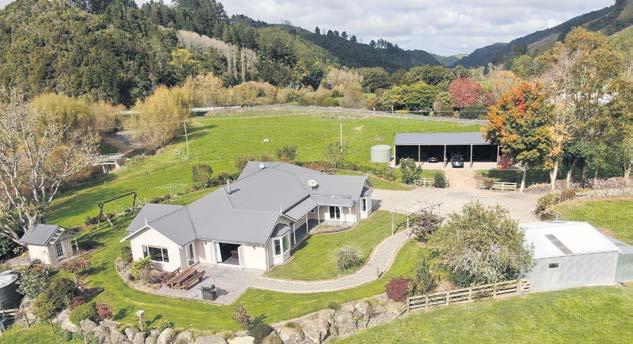
WAIMAHORA 1811 Otewa Road
Pinnacle Lifestyle on Otewa 1811 Otewa Road presents an outstanding lifestyle opportunity that ticks all the boxes. A great location, this property would suit retiring farmers wanting to downsize, equine enthusiasts ready to set up cross-rail jumps, or keen fly-fishermen wanting to snatch the elusive brown trout with 800m of Waipa River running along the eastern boundary. Sit back and relax on the 7.3ha effective fertile flat land with highly maintained infrastructure and many of the improvements classed as near new including new cattle yards with crush, new water system with a trough in all 15 paddocks and finally the brand new 260m² Colorsteel workshop fit for many purposes. The beautiful, modern 2008 built home is a five bedroom, three bathroom dwelling including 50m² internal access garage and two lounges flanked by the designer kitchen, all pitched under the 2.7m stud. Enjoy peace and quiet with native forest views, and the bonus of a short drive to town. School bus at the gate or a 9km drive to Otewa primary school. Give Pete or Tony a call today to discuss this rare lifestyle opportunity.
DISCLAIMER: the legal area as described in the title is 8.8596ha, but 1ha (more or less) is is situated across the Waipa river and cannot be accessed by easement or right of way.
how operations will be managed on an ongoing basis, should resource consent be granted. Without details of how ongoing effects will be managed, it is difficult to determine how it could be concluded that effects will be “no more than minor.”
Fonterra was also concerned with flooding, land use compatibility, alignment with the Waikato Regional Policy Statement, the district plan’s specialised dairy industrial overlay status.


Plus GST (if any)
By Appointment Only



Diabetes is a serious problem in New Zealand with over 300,000 Kiwis having Type 1 or Type 2 and 50 more being diagnosed every day. But discovering that you are diabetic is not the end of the world and healthy eating can be an effective antidote.
Diabetes is a metabolic disorder that prevents the body producing or properly using insulin which converts foods into energy and controls blood glucose levels.
The glycaemic index (GI) was developed to rank foods based on their immediate effect on blood sugar levels.
The GI sugar (glucose) level is set at 100 and every food is ranked on a scale of zero to 100 according to its effect on blood glucose levels. In essence, a low GI is below 55; a medium GI is 56-69; and a high GI is over 70.
A good diet: helps achieve and maintain good control of blood glucose levels; helps regulate body weight; and can help delay or even prevent the onset of diabetes
For a low GI diet, choose high-fibre foods such as grains, fruits, veggies and legumes for meals and snacks. Water — instead of ‘fizzies’— is a great choice for quenching your thirst. Exercise regularly to help your cells use glucose (blood sugar) more efficiently.
Fresh spring rolls
Mint Sauce: 1 cup firmly packed mint leaves
2 spring onions, finely chopped
1 teaspoon diced chilli
1 clove garlic, crushed
1/2 teaspoon mild honey
1/4 cup lemon juice
Spring Rolls: 8 large raw prawns, shelled and deveined
20g fine vermicelli noodles
1/2 cup thinly shredded cabbage or crisp lettuce
4 large rice paper wrappers
1 small carrot, julienned
1/4 cup peeled, seeded and julienned cucumber
8 each: mint leaves, small sprigs coriander
To make the sauce, place all the ingredients in a small food


processor or use a hand blender. Mix until smooth. Place in a bowl ready to serve.
Poach the prawns gently in boiling water until pink and cooked, about 1 minute. Drain and place in icy water to cool. Drain, then halve lengthwise.
Pour boiling water over the noodles and soak for about 10 minutes, until softened. Drain and cool. Combine with the shredded cabbage.
Pour some warm water into a frying pan or large dish. Soak a rice paper wrapper in the water, until softened. Lift out and place on a clean board. Place 1/4 of the noodle mixture on the front side of the wrapper. Add some carrot, cucumber, herbs and 4 prawn halves. Fold in the sides and roll up. Place on a platter and cover with damp paper towels. Repeat to make 4 rolls.
Cut the rolls on the diagonal and place on individual plates.
Serves 2 as a light meal.
Diabetic muesli
There are few commercial mueslis suitable for diabetics on supermarket shelves. Check you keep to the recommended serving size.
4 cups rolled oats
1/2 cup each: desiccated coconut, sultanas, craisins
1 cup flaked almonds
2 cups each: rye wholegrain flakes, bran flakes

We’ve been out delivering our 2025 calenders. If you haven’t recieved your’s get in contact with us or call into our office and pick one up today.





1 1/2 cups wheatgerm
1/3 cup sunflower seeds
Combine all the ingredients and store in an airtight container. Makes just over 10 cups. One-third of a cup equals 1 serving.
Low-fat mushroom stroganoff
4 tablespoons extra virgin olive oil
1 large onion, thinly sliced
2 teaspoons paprika pinch chilli powder
500g button mushrooms, sliced (white and brown)
1 cup vegetable stock
freshly ground black pepper to taste
1/2 cup plain low-fat Greek yoghurt mixed with 1 tablespoon cornflour
Heat the olive oil in a large frying pan. Add the onion and sauté until tender and lightly golden. Stir in the paprika, chilli powder and mushrooms. Stir for about 2 minutes then slowly pour in the stock.
Simmer for about 10 minutes, stirring occasionally, until reduced.
Remove from the heat and rest for about 2 minutes. Swirl in the yoghurt.
Excellent topped with finely grated lemon rind and chopped parsley and served on rice or whole wheat pasta noodles. Serves 4.






























































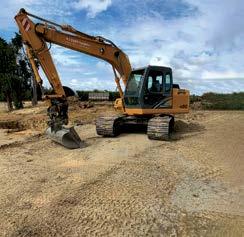














For
If





































Pursuant
Wednesday
Monday
Wednesday
Please visit the Council website for all meeting information. Electronic copies of Council agendas are available on the Waipa District Council website prior to meetings.
Steph O’Sullivan Chief Executive

Awamutu News and King Country News is one week prior to publication day. Copy deadline for ad-make up is 5pm Friday prior to publication day. Advertiser is responsible to advise us of any copy changes before proofing deadline – anything not signed o by this time, ad prints as per the last proof sent. Advertising supplied in completed form (finished artwork or camera ready), deadline is Tuesday midday prior to publication day. Public holiday weeks, all deadlines move forward one working day. Cancellation deadline is one week prior to publication. If cancellations are received after the cancellation deadline, then full charge applies. All other publications and products see separate booking and deadline sheet. Advertising setting is free for up to two proofs, further changes will incur a production fee. Advertising copy set by Good Local Media Ltd is the property of Good Local Media Ltd and for use in Good Local Media Ltd publications only. If used elsewhere charges will apply, pricing available on request. If supplied ready to print, copy is owned by the advertiser. Publication day is Thursday for urban






Email text for ad (max 120 characters, including word spaces) through to admin@goodlocal.nz week prior to your garage sale day.
Payment due Tuesday prior to garage sale day. Te Awamutu News is published on Thursdays.
deliveries and Friday morning for rural deliveries. Acceptance of advertising for publication and free productions services is at the discretion of the publisher.
RATE CARD: Rates are based on advertising space only and are over a 12-month period starting from the date the first ad publishes. Rate bracket e.g. 6 insertions, 12 insertions etc. chosen allows ad sizes to vary within the rate bracket. If the number of insertions chosen is not met then a bulk charge will be applied at the end/cancellation of your schedule based on correct rate reflective of the number of ads published e.g. if you have chosen the 12 insertion rate and only publish 6 insertions, the bulk charge will be the di erence in price between the 6 insertion rate and 12 insertion rate multiplied by the number of ads published. You pay the rate reflective of the number of ads you actually publish.
INVOICING AND PAYMENTS: For advertisers on a regular schedule invoices will be sent at the end of the month and


payment is due by the 20th of the following month, otherwise payment is required by end of day Tuesday in advance of publishing. Accounts in arrears +60 days may be subject to a $95 + GST late payment fee per month. Advertiser is responsible for all
and



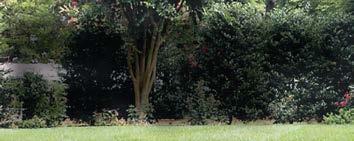







- 2.8 Acres/hr

Husqvarna FR Series V-Twin - 21.5hp - 42” Cutting Width - 2.2 Acres/hr Easy to start, simple operation and proven performance. The ClearCut™ fabricated cutting deck provides unsurpassed cutting results.













Kawasaki FR Series V-Twin - 24.0hp 54” Cutting Width - 3.5 Acres/hr Take performance, productivity, and comfort to a whole new level. The intuitive operator interface, heavy-duty steel frame and commercial rated hydraulic system
Equipped with pedal-operated, hydrostatic transmission, and low vibe deck drive.

Kawasaki FR Series V-Twin - 23.0hp - 48” Cutting Width - 2.5 Acres/hr High performance mower with a ClearCut™ fabricated cutting deck designed for durability, performance and an even cut.

@ 3300 rpm - 48cm Cultivating Width - 15cm Working Depth - Rotational Speed 103 - 207 rpm
A light-weight, compact and easy to use tiller with great manoeuvrability.
Equipped with a high-quality transmission










